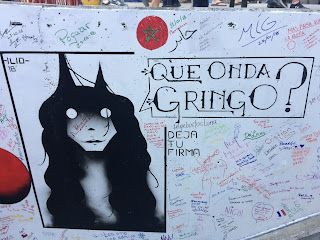Headed on a trip to a couple small towns outside Barillas, Guatemala to learn about the people and stoves they cook on. Seeing them in action will give me a good sense of the design requirements and note any possible improvements in the next iteration. I’ve been volunteering for Burn Design Lab on Vashon Island in Washington, where they take lessons learned from an NSF grant-funded superstove and translate that into region specific stove models for Central America and West Africa.
I started the trip by train to Vancouver, BC, where I met with my high school buddy Adam Huggins, his partner Ilana, and fifty of his friends celebrating the release of his new podcast Future Ecologies. Adam takes food sustainability and social justice to a whole different level, with a specialization in food forests. This podcast will explore topics stemming from that. Check it out!
https://www.futureecologies.net/
I made my (tight) connection in Mexico City, breezing through the new immigration control computers for most North American passport holders, I think. And no more schlepping checked bags off the carousel and back on to a conveyor down the hall—they go direct now. Way to go MEX!
Arrived in Guatemala City, found my group and driver, and we drove headfirst into a 3.5 hour rush hour drive through stop and go traffic to get to Antigua, which is normally an hour away. Stopped at Pollo Campero, a Guatemalan institution with many locations in the US to get a much needed rest from the traffic and plate of deliciously seasoned fried chicken.
Plenty of time to ponder transportation infrastructure, and how as a tourist each mode of transportation has benefits and drawbacks. Bicycling is a great pace but can be super unpleasant in traffic such as this—we only saw one brave soul weaving through the lanes. Motorcycles are similarly limited by load capacity and spartan safety features. Cars enable luggage but hinder by being stuck in traffic and needing to be parked—a taller order than in the US. In each case the travel style is dictated by the vehicle of choice, and none stand apart as a clear advantage. I’m trying to figure out the transportation type and therefore logistics for the next undetermined vacation.
I started the trip by train to Vancouver, BC, where I met with my high school buddy Adam Huggins, his partner Ilana, and fifty of his friends celebrating the release of his new podcast Future Ecologies. Adam takes food sustainability and social justice to a whole different level, with a specialization in food forests. This podcast will explore topics stemming from that. Check it out!
https://www.futureecologies.net/
I made my (tight) connection in Mexico City, breezing through the new immigration control computers for most North American passport holders, I think. And no more schlepping checked bags off the carousel and back on to a conveyor down the hall—they go direct now. Way to go MEX!
Arrived in Guatemala City, found my group and driver, and we drove headfirst into a 3.5 hour rush hour drive through stop and go traffic to get to Antigua, which is normally an hour away. Stopped at Pollo Campero, a Guatemalan institution with many locations in the US to get a much needed rest from the traffic and plate of deliciously seasoned fried chicken.
Plenty of time to ponder transportation infrastructure, and how as a tourist each mode of transportation has benefits and drawbacks. Bicycling is a great pace but can be super unpleasant in traffic such as this—we only saw one brave soul weaving through the lanes. Motorcycles are similarly limited by load capacity and spartan safety features. Cars enable luggage but hinder by being stuck in traffic and needing to be parked—a taller order than in the US. In each case the travel style is dictated by the vehicle of choice, and none stand apart as a clear advantage. I’m trying to figure out the transportation type and therefore logistics for the next undetermined vacation.







































